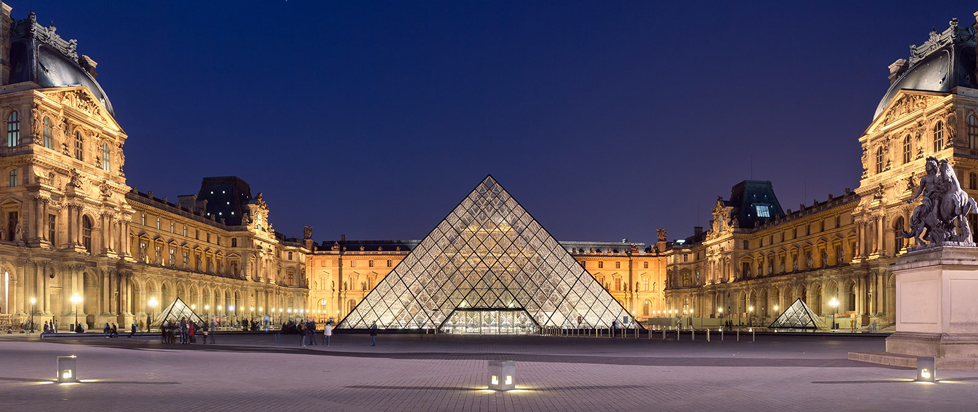
Disdain and Devotion

This column is a reprint from Unwinnable Monthly #173. If you like what you see, grab the magazine for less than ten dollars, or subscribe and get all future magazines for half price.
———
Architecture and games.
———
When it comes to videogames, levels can sometimes be a little bit like diamonds in the rough, criticized at first for their lackluster layouts or broken bottlenecks, only to be broadly recognized later on as minor masterpieces. In particular, maps from older videogames along the lines of Doom and Quake, once dismissed for their poor design or perceived difficulty, have come to be revered for their interesting ideas and creative solutions, despite their sometimes-frustrating limitations. This process of reinterpretation and reevaluation mirrors the journey of many architectural icons, once thoroughly panned but eventually rising to prominence. Paris for example offers several compelling case studies including the Eiffel Tower, Louvre Pyramid and Centre Pompidou that were at first controversial but are now celebrated as marvels of architecture.
Gustave Eiffel presented the public with a tower made of iron latticework as the centerpiece for the Exposition Universelle of 1889. The building faced a barrage of criticism from the architectural community, detractors disparaging its industrial appearance, comparing the structure to the ornate buildings which had defined the local streetscape for decades. In spite of this initial backlash, the Eiffel Tower soon captured the imagination of the public, becoming a symbol of technological achievement and the wonders of modernity. The imposing size facilitated by the use of iron lattice came to symbolize the spirit of progress and innovation that would become so pervasive towards the end of the nineteenth century. As people grew accustomed to seeing its presence, the Eiffel Tower went from being a contentious addition to an integral part of the skyline. The structure stands today as an emblem, once controversial but now beloved.
The glass pyramid welcoming visitors to the Louvre was unveiled by Ieoh Ming Pei back in 1989. This brand-new addition to the building, part of a sweeping renovation, was met with widespread controversy, critics arguing that its modernist aesthetics could only ever clash with the architectural style of the Louvre, a product of the Renaissance. In spite of this backlash, the Louvre Pyramid has undergone a remarkable transformation in terms of its public perception. The design allows natural light to filter into an underground lobby, creating a striking but still inviting space. The main point of entry in the past was a relatively inconspicuous door, something which resulted in long lines and plenty of congested passageways. The overall design of the Louvre Pyramid provides not only a grand entrance but also facilitates the flow of visitors into the museum. The creation has recently come to be seen as a successful marriage of ancient and modern aesthetics, blending seamlessly into the background of the surrounding structure.

When the building was unveiled by Renzo Piano in 1977, Parisians were shocked by the radical design of the Centre Pompidou. The innovative inside-out architecture featuring exposed structural and mechanical systems flew in the face of contemporary conventions, being widely described as an eyesore. But this was only the beginning of the story, as the Centre Pompidou has since emerged as one of the most visited cultural attractions in all of Paris. This boldly designed building is now celebrated as a symbol of modern architecture, having played an important role in revitalizing the surrounding district, once a neglected and relatively rundown part of Paris. Le Marais has undergone something of a cultural renaissance in recent years, owing at least in part to the nearby presence of the Centre Pompidou. The structure provides a reminder that art and architecture can challenge our perceptions and push the boundaries of what many consider possible, enriching our cultural understanding in the process.
The journey of these architectural icons from initial disdain to eventual devotion brings into focus the somewhat unpredictable nature of design. Similar to how some videogame levels have been criticized but later hailed as masterpieces, many buildings have transcended their initial criticism to become beloved landmarks, at least for later generations. This underscores the importance of remaining open minded about embracing potential, broadening our appreciation of artwork in all of its various forms. As people continue to push the boundaries of design, structures like the Eiffel Tower, Louvre Pyramid and Centre Pompidou serve as a testament to the unstoppable power of progress. We need to remember that beauty often lies in the eye of the beholder and that perceptions can change over time, whether in the virtual space of a videogame level or the tangible world of architecture.
———
Justin Reeve is an archaeologist specializing in architecture, urbanism and spatial theory, but he can frequently be found writing about videogames, too. You can follow him on Twitter @JustinAndyReeve.




